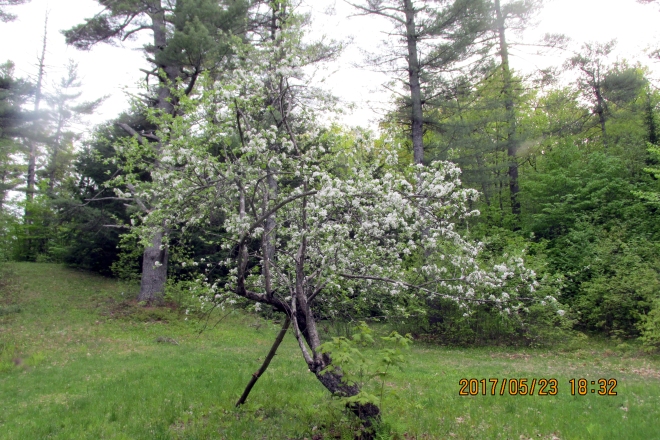As I walk through the woods, the things that amaze me most about New England are the stonewalls (which I consider a greater feat than the Great Pyramids) and the apple trees.
As I’m sure you are aware, there are no apple trees native to the Americas. All these trees came stock and seed from Europe, starting long before we were a nation.
There are literally thousands of varieties, many of which grow wild in our woodlands, that are found nowhere else in the world. They are varieties that have no commercial value in today’s world, but are of extreme importance to the wildlife that depend to varying degrees on them. That’s why we were thrilled on our recent trip North of the Notches to see hundreds and hundreds of these trees in full bloom. It makes it so easy to see them for a few days a year when they are otherwise camouflaged into a green world of leaves and limbs.
I call them wild trees because they are no longer in the care of humans and survive as best they can. Tens of thousands have died over the last century. I can find almost a hundred just here in town, but thousands still remain.
Most of them are more, much more than 100 years old. Some twice that. The tree that I shot that buck from in Vermont in 1967, is a good example. It was, according to the farmer there, a hundred years old then, and last I knew it was still alive, 50 years later, having survived being mangled by bears and a lightning strike.
So it should come as no surprise that I cherish them and help them, when possible by cutting out competing saplings and in some cases pruning and feeding them. This picture of the apple tree at J.E. shows how that effort pays off.

J.E. Apple Tree Blossoms
A tree full of blossoms does not ensure fruit later, but a lack of blossoms equals no chance of fruit.
Long live the apple tree!
WLAGS
